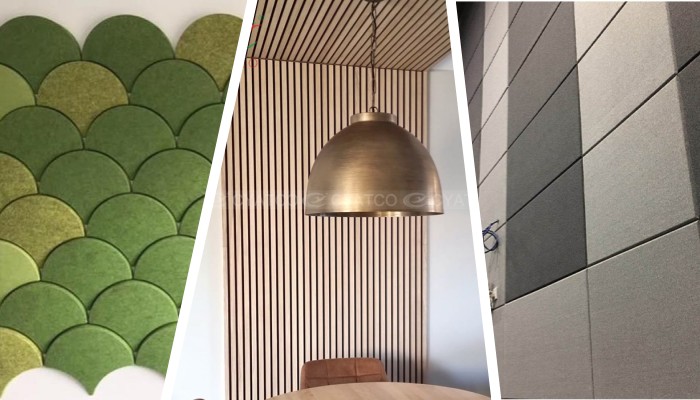How are acoustic panels selected?
Choosing the right acoustic panel is a multi-faceted process. Here are some key factors to consider when selecting sound-absorbing materials:
1. Sound absorption performance
The primary consideration is the performance of the acoustic panels. Typically, you can assess a product’s sound absorption by looking at its NRC (Noise Reduction Coefficient) value. The higher the NRC value, the better the material’s sound-absorbing effect. The ideal sound-absorbing material should be able to provide good sound absorption performance in the wide frequency range.
2. Frequency response
Different acoustic panels respond differently to different frequencies of sound waves. For example, some materials are better suited to absorbing high-frequency sound, while others are better at handling low-frequency noise. Understand the type of noise you must deal with (such as room noise, machine roar, traffic noise, etc.) and choose the sound-absorbing material corresponding to the frequency response.
3. Environmental adaptability
Consider whether the acoustic panel is suitable for your specific environment. For example, in a humid or dusty environment, moisture-proof and dust-proof sound-absorbing materials should be selected; Where fire prevention is required, materials with flame retardant properties should be selected.
4. Ease of installation
The ease of installation of sound-absorbing materials is also an important factor. Some materials may require professional installation tools or skills, while others can be easily pasted or hung. You can save money and time by choosing the right material for your installation capabilities.
5. Aesthetics
The sound-absorbing material should not only be powerful but also harmonize with the interior decoration. There are many different colors, textures, and shapes of sound-absorbing materials available on the market, which can be selected according to personal preferences and interior design styles.
6. Economy
While high-performance sound-absorbing materials may come with a higher price tag, investing in high-quality products can reduce maintenance and replacement costs in the long run. Therefore, where the budget allows, priority is given to cost-effective sound-absorbing materials.
7. Environmental protection and safety
Choosing environmentally friendly materials is crucial to reducing environmental pollution. In addition, make sure that the materials you choose are not harmful to humans, especially for children and pets. Review relevant certification and testing reports to ensure the safety of materials.
8. Service life
It is also important to know the expected service life of acoustic panels. Durable materials can reduce the hassle of frequent replacement and reduce long-term costs.
In the selection of acoustic panels, a comprehensive consideration of all the above factors can help you find the most suitable for your needs, you can also consult the advice of professionals is also very beneficial.


